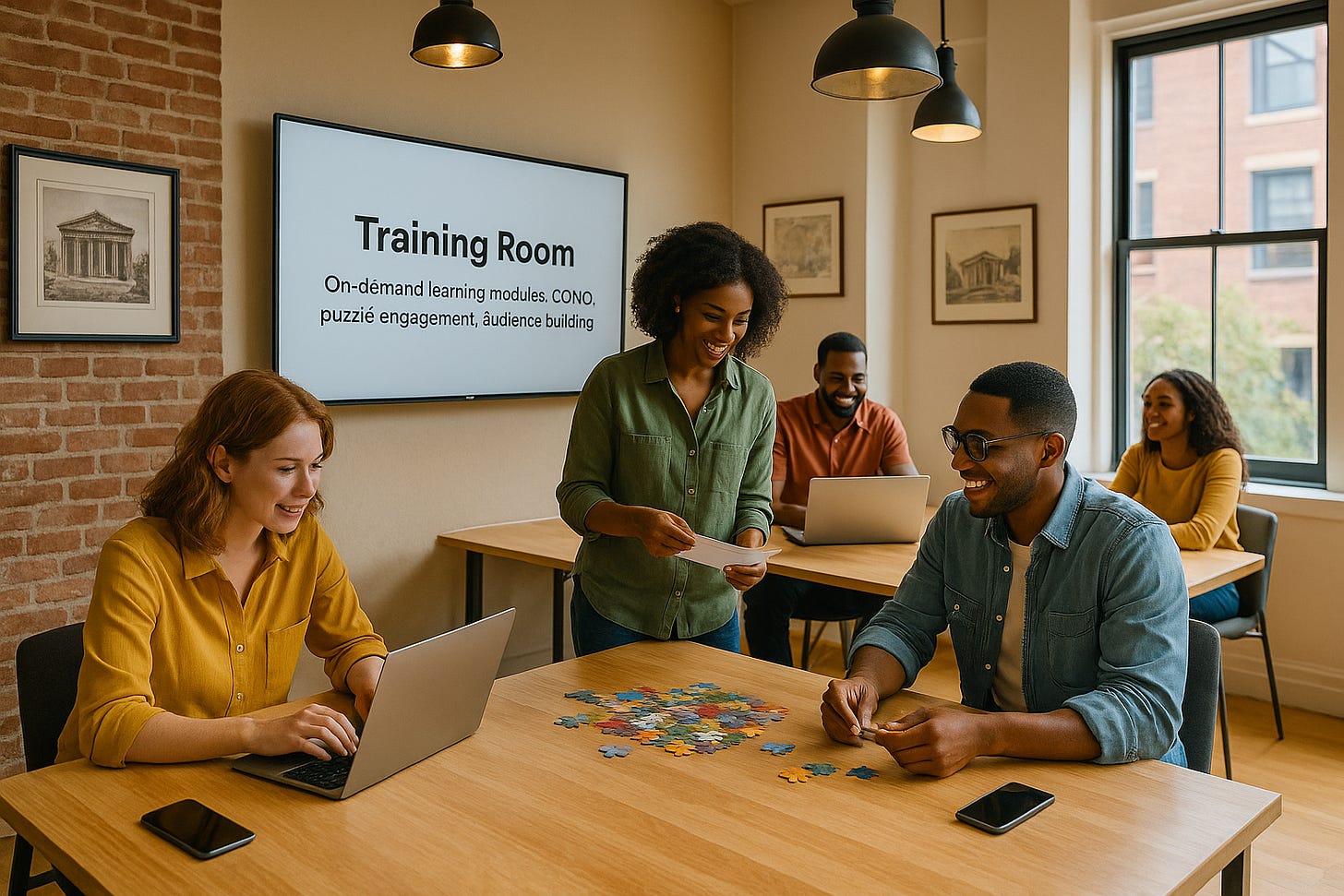Course Reflections
Growth isn’t just about adding customers — it’s about creating momentum that sustains itself. The flywheel model focuses on building compounding energy across acquisition, engagement, and retention. Each satisfied user fuels the next stage of growth, turning your ecosystem into a self-reinforcing loop.
In this module, you’ll learn to design a growth flywheel that accelerates with every user action. Instead of relying on constant marketing spend, you’ll create systems that generate exponential returns from trust, community, and recurring value.
Overview
Learn how to engineer compounding growth using the flywheel framework.
Understand the key phases of the flywheel: attract, engage, delight.
Identify friction points that slow momentum.
Use ZoeAI to measure momentum and optimize engagement loops.
Design scalable systems that drive continuous value creation.
Key Terms
Flywheel: A self-reinforcing growth model where momentum increases through compounding engagement and satisfaction.
Momentum: The sustained force that drives growth through customer trust, satisfaction, and advocacy.
Friction: Any point in the system that slows progress or reduces conversion.
Advocacy Loop: A process where customers become promoters, generating new leads organically.
Compounding Growth: The acceleration of results over time as improvements build on prior success.
Phase 1 — Learn (Core Principles)
Momentum Is Earned: Each customer interaction adds or removes energy from the system.
Delight Fuels Advocacy: Happy customers become your most powerful marketing channel.
Remove Friction Relentlessly: Growth requires eliminating drag in every process.
Data Builds Speed: Measure engagement patterns to keep energy flowing.
AI as Momentum Tracker: ZoeAI identifies friction, quantifies momentum, and predicts long-term growth velocity.
Phase 2 — Lab (See It in Action)
Scenario: A SaaS startup relies on paid ads for growth but faces rising acquisition costs. By introducing referral incentives and community learning sessions, engagement doubles. ZoeAI tracks referral velocity and satisfaction scores, revealing a clear acceleration in organic user acquisition — the flywheel is now self-propelling.
Observation Task: Identify which flywheel elements (attract, engage, delight) were enhanced. How did removing friction change growth velocity?
Phase 3 — Build (Hands-On Exercise)
Map your customer journey across attract, engage, and delight phases.
Identify where energy (momentum) is lost or friction appears.
Brainstorm one action to remove friction in each phase.
Use ZoeAI to model engagement loops and forecast velocity improvements.
Create a dashboard metric to track continuous flywheel performance.
Reflection & Challenge
What would your growth look like if every customer brought you one more? What’s stopping that from happening right now?
Mini Cookbook — Flywheel Optimization Framework
Define your flywheel inputs (marketing, product experience, community).
Identify friction points across the user journey.
Use ZoeAI to detect momentum trends.
Apply automation or personalization to amplify delight.
Review velocity monthly to ensure compounding impact.
How ZoeAI Can Help
Measure engagement velocity and identify drop-offs.
Predict future momentum based on user advocacy.
Recommend friction-reduction strategies.
Simulate long-term growth curves for sustainable scale.
Summary
A flywheel turns growth from effort into energy. Once momentum takes hold, your business moves faster with less input. With ZoeAI managing optimization and insight, you can sustain acceleration that compounds indefinitely.
Take the quiz and move to the next module.


